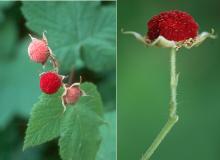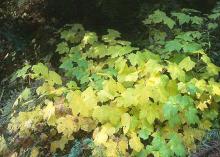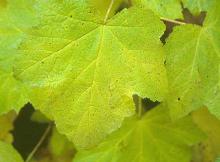Rubus parviflorus
Common name:
Thimbleberry
Western Thimbleberry
Pronunciation:
RU-bus par-vi-FLOR-us
Family:
Rosaceae
Genus:
Type:
Broadleaf
Native to (or naturalized in) Oregon:
Yes
- Deciduous shrub, erect or scrambling, to 3-8 ft (0.9-2.5 m) tall, "unarmed" (no prickles), thin stems, which are greenish and hairy. Leaves alternate, simple, broad, 7.5-20 cm diameter, palmately 3-5 lobed, base deeply cordate, margin serrate, dark green above, minutely hairy on both surfaces. Flowers white, rarely pinkish, 3-5 cm wide, 4-8 in loose clusters (corymbs), petals crinkled. Fruit scarlet, aggregate of hairy druplets, in flattened hemispherical shape, pulls free of torus (like a raspberry), considered insipid to sweet, they are coarse and seedy.
- Sun or shade. Grows best in moister areas, but it tolerates drier sites
- Hardy to USDA Zone 3 Wide native range, from Alaska to California and the mountains of New Mexico and into northern Mexico, eastward through the Dakotas to the Great Lakes States. R. odoratus, Flowering Raspberry, which is native to eastern North America, is sometimes called Thimbleberry, although this common name is best reserved for R. parviflorus.
- parviflorus: small flowered
- Oregon State Univ. campus: south of Peavy Hall.








